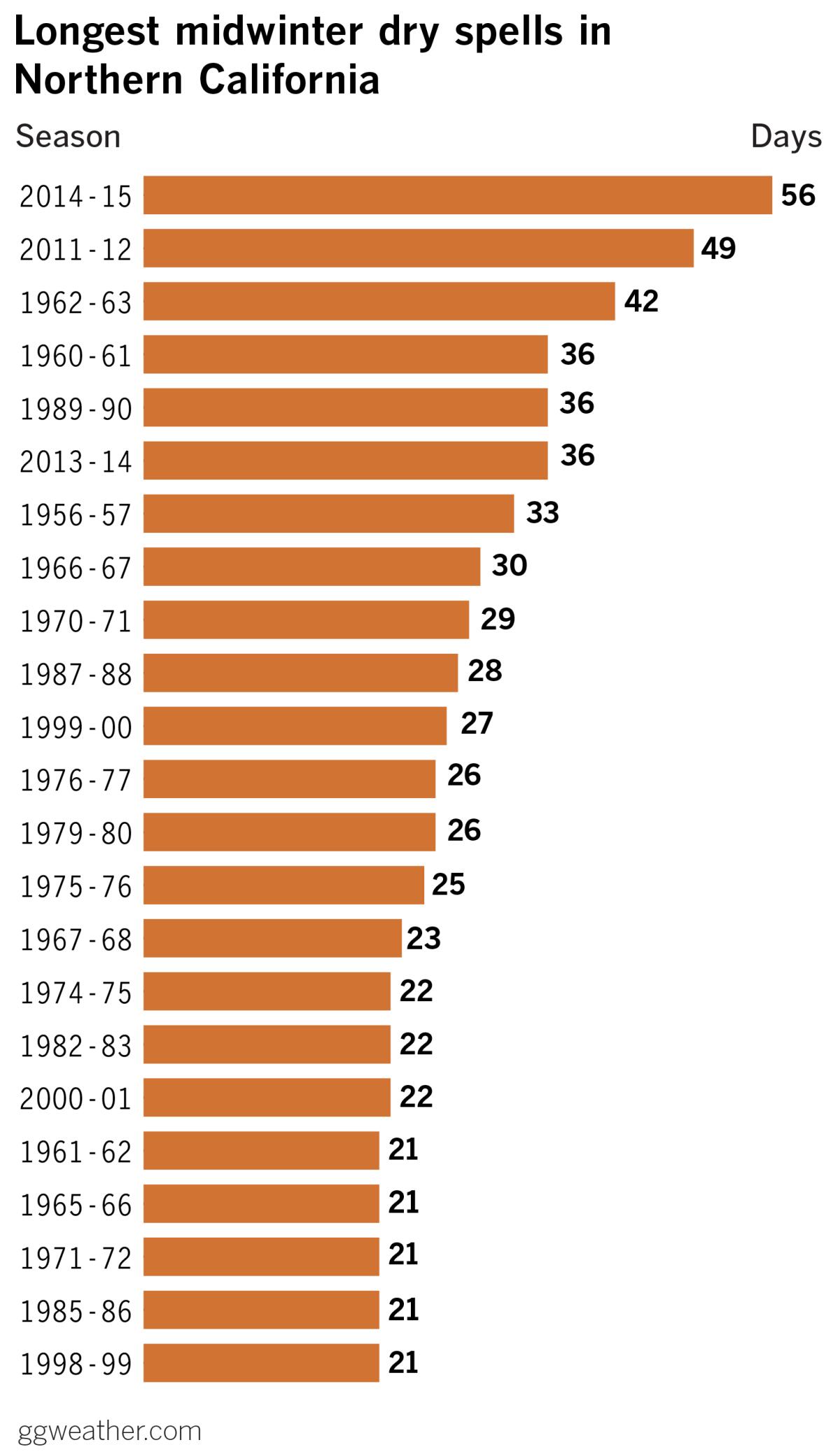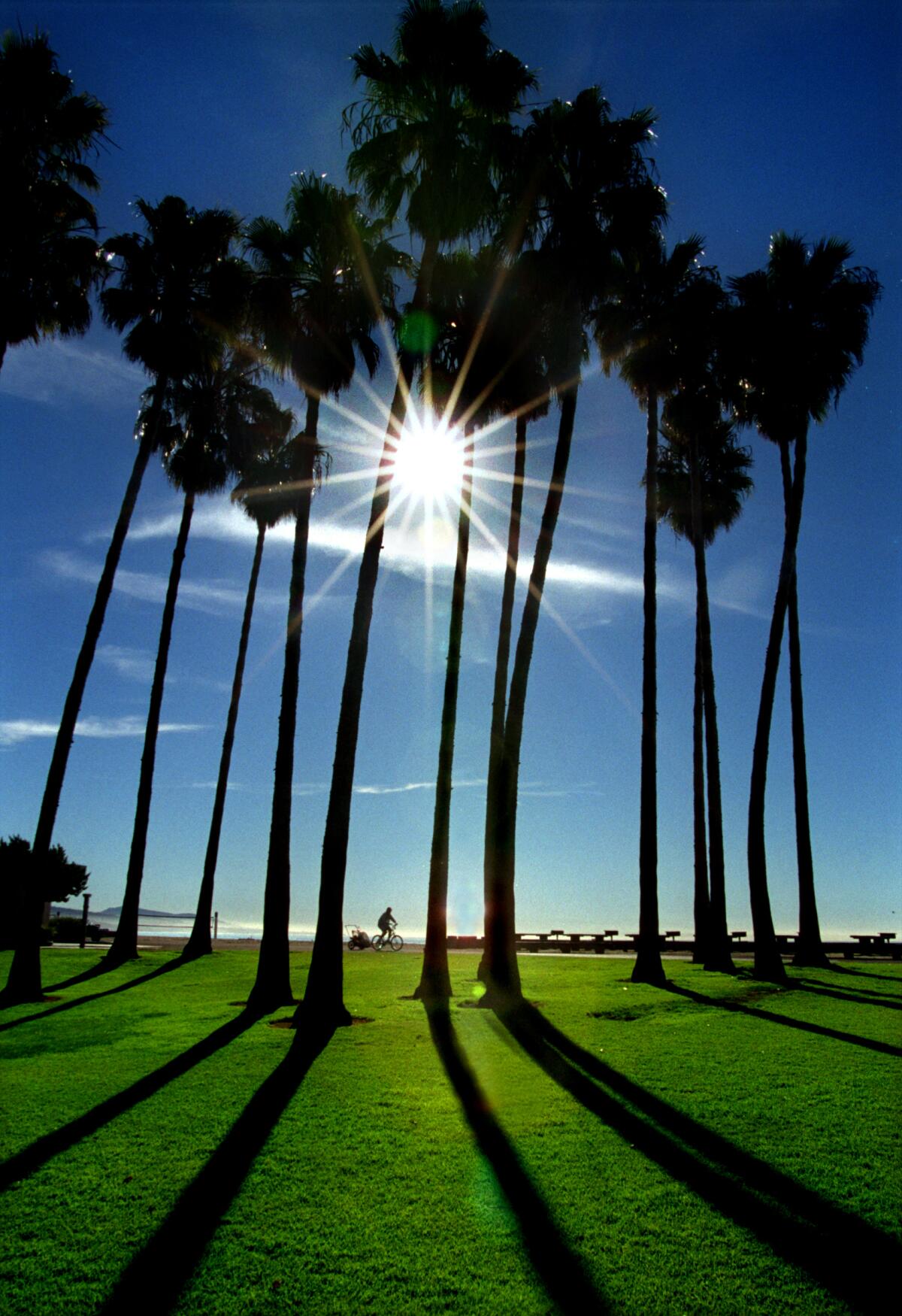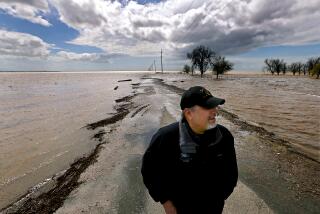Midwinter dry spells like this are not unusual in California, even in wet years

- Share via
California has an extended period of dry weather in the winter almost as regularly as the swallows return to San Juan Capistrano, said meteorologist Jan Null of Golden Gate Weather Services.
Medium-range forecast models aren’t projecting significant rain in the state for at least a week.
Null compiled data for San Francisco based on the last 69 rainfall seasons, which are measured from July 1 to June 30, and found that dry periods during December and January averaged 19 days. If it’s dry in Northern California, it’s generally even more so the farther south in the state that you go, Null said. So if Northern California isn’t getting any rain, Southern California usually isn’t either.

Null defines a dry period as consecutive days with no rain, or dry periods broken by no more than two nonconsecutive days of very light precipitation. Light is defined as no more than 0.08 inches of rain.
Such dry periods occur in both wet and dry years. Even the unusually wet El Niño seasons of 1982-83 and 1997-98 featured dry spells of 22 and 17 days, respectively.
Eight days is the shortest dry spell, which occurred twice: in 1957-58 and again in 1994-95. These were also El Niño years. The longest dry period was 56 days in 2014-15. All of these midwinter dry spells began in December or January, with the exception of a 19-day dry period in 1964-65 that didn’t start until February 6.
So a midwinter break from precipitation happens almost every year when the atmosphere settles into a period of equilibrium dominated by high pressure, usually lasting two or three weeks, Null said.
Bill Patzert, former climatologist at NASA’s Jet Propulsion Laboratory, agrees that this break will not be long. “These hiatuses are totally normal. The rain waxes and wanes, just like drought,” he said. “Californians are fickle. When we have rain we complain, and when we don’t have rain we complain. If you want rain, just wait a week.”

More to Read
Sign up for Essential California
The most important California stories and recommendations in your inbox every morning.
You may occasionally receive promotional content from the Los Angeles Times.










